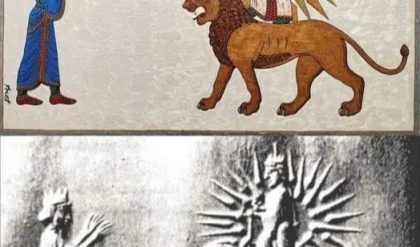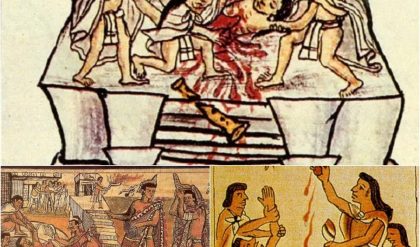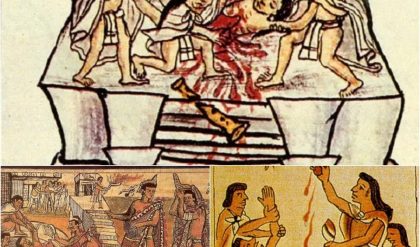The ancient civilization of Egypt has long been a source of fascination for historians, archaeologists, and enthusiasts of the unexplained. Its towering pyramids, grand temples, and enigmatic artifacts continue to intrigue modern minds. Among these wonders, Egyptian hieroglyphs stand as one of the most compelling keys to understanding the culture and history of this ancient civilization. However, some researchers and theorists suggest that these intricate symbols may also hold clues to an even deeper mystery—extraterrestrial influence on early human history.

The Mystery of Hieroglyphs: More than Just Symbols?
Egyptian hieroglyphs were not only a writing system but also a symbolic representation of the Egyptians’ worldview, religious beliefs, and connection to the cosmos. For centuries, these symbols went undeciphered until the discovery of the Rosetta Stone in 1799, which allowed scholars to unlock the meanings behind them. Yet, some argue that even after translation, hieroglyphs may conceal messages that go beyond the surface level, potentially pointing to extraterrestrial intervention.
Certain hieroglyphic carvings, particularly those found in the temples of Abydos and Dendera, have raised eyebrows among those who subscribe to the ancient astronaut theory. The most notable example comes from the Temple of Seti I at Abydos, where a controversial panel appears to depict modern technologies like helicopters, submarines, and even aircraft. Dubbed the “Abydos Carvings,” these hieroglyphs have been widely debated, with some dismissing them as coincidental shapes or later modifications, while others speculate they could be evidence of advanced knowledge introduced by extraterrestrial visitors.

The Role of Egyptian Gods and Their Connection to the Stars
One of the most intriguing aspects of ancient Egypt is the profound importance the Egyptians placed on the stars and the cosmos. Many of their gods were associated with celestial bodies, and their mythology often intertwined the divine with the heavens. Gods like Ra, Thoth, and Osiris were depicted as having dominion over the skies, and the pyramids themselves were aligned with specific stars, suggesting a deep connection between the spiritual and the extraterrestrial.
Proponents of the ancient astronaut theory argue that these gods were not merely figments of the Egyptian imagination but could represent actual extraterrestrial beings who visited Earth in the distant past. Thoth, the god of wisdom and writing, is particularly interesting in this context. Known for bringing knowledge and writing to the Egyptians, some theorists suggest that Thoth’s teachings were of extraterrestrial origin and that hieroglyphs could be the result of alien communication imparted to early human civilizations.
Moreover, the ancient Egyptian “Book of the Dead” and other sacred texts often describe journeys to the stars or encounters with beings from the heavens. Could these texts be more than allegorical tales of the afterlife? Some researchers speculate that these ancient writings might hint at extraterrestrial contact, encoded in symbolic language that blends mythology with actual events.
The Pyramids as Cosmic Beacons
Perhaps the most iconic symbols of ancient Egypt, the pyramids of Giza have been linked to extraterrestrial theories for decades. Their sheer size, precise construction, and alignment with the Orion constellation have led many to wonder if these structures served a greater purpose than simply housing the pharaohs. Some believe that the pyramids acted as energy hubs or cosmic beacons that communicated with extraterrestrial beings.
The idea that hieroglyphs could encode instructions or messages related to the pyramids’ cosmic function adds another layer to this theory. Could the hieroglyphs inscribed on the walls of tombs and temples be describing not only religious practices but also ancient knowledge about interstellar travel, energy generation, or contact with alien civilizations?
Artifacts and Symbols: Evidence of Alien Technology?
Beyond the pyramids and temples, other Egyptian artifacts have sparked speculation about extraterrestrial influence. The so-called “Dendera Light” is a famous carving from the Temple of Hathor in Dendera that appears to show a bulb-like object, resembling a modern electrical device. While mainstream scholars believe this to be a symbolic representation of a lotus flower and snake, ancient astronaut theorists propose that it may represent ancient Egyptian knowledge of advanced technology, potentially brought by extraterrestrial visitors.
Similarly, the “Saqqara Bird,” a wooden artifact dating back to 200 BCE, has been interpreted by some as a model of a glider or early aircraft. Though skeptics dismiss this claim, theorists argue that such artifacts, along with cryptic hieroglyphs, could be remnants of extraterrestrial technologies that were misunderstood or mythologized by the Egyptians.
Could Hieroglyphs Hold the Key to Human-Alien Contact?
While there is no definitive proof linking Egyptian hieroglyphs to extraterrestrial influence, the fascination with this possibility continues to grow. For those who believe in the ancient astronaut theory, hieroglyphs represent more than just a writing system—they could be the remnants of a long-lost communication between humanity and advanced alien beings. These symbols, carefully preserved for thousands of years, might hold the secrets to a greater understanding of our place in the universe.
In conclusion, the exploration of Egyptian hieroglyphs in the context of extraterrestrial influence opens up a tantalizing possibility: that our ancient ancestors were not alone in their quest for knowledge and advancement. Whether these enigmatic symbols reveal hidden truths about alien contact remains a matter of debate, but their enduring mystery ensures that humanity’s quest to uncover its cosmic origins will continue. The hieroglyphs may yet unlock answers to questions that have haunted us for millennia—if we can only decipher the messages they hold.





